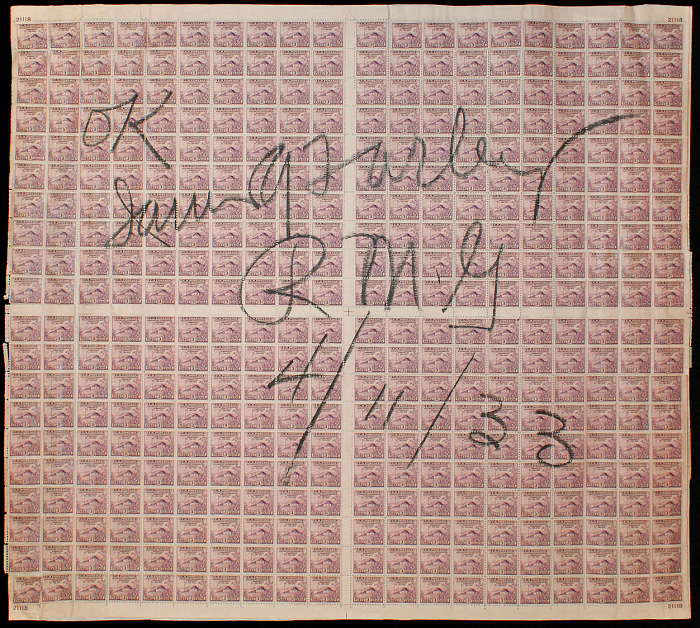Typically, Postmaster General Farley identified the originals that he purchased and gave away by signing and dating each sheet. In addition, he wrote in the name or names of the recipients in the selvage of the sheets. When gifts of these were made to one or more of his own children, he usually had the president also autograph them.
This sheet, consisting of four panes of 100 stamps each, is Scott #727. The design commemorates the Proclamation of Peace in 1783, which ended the Revolutionary War. It is also known as the “Newburgh” sheet, named for the New York site of General George Washington’s headquarters, from which the Proclamation was issued. This was the first stamp of the new Roosevelt administration that went through the design to stamp issuance procedure under the guidance of Farley, the new postmaster general.
On its face, this sheet might not be considered an original special printing: there is no dedication to a recipient, as is normally the case. Instead, Farley has written in very bold manuscript across the face of these stamps “OK/ James A. Farley/PMG/4/11/33.” It might be an official approval of the design, but that was accomplished through the die and plate proof process before issuing any stamps.
The stamps were issued on April 19, 1933. Farley dated these eight days earlier, on April 11, 1933, the date of the first run of the rotary press that printed the stamps at the Bureau of Engraving and Printing. This was a media event at which Farley announced he had been instructed to purchase a sheet for the President and that he was likewise acquiring sheets for each of his three children.
The stamps (Scott #727) are perforated and gummed. The Scott Catalogue lists the reprints (Scott #752) as perforated but ungummed. This sheet is gummed, as is at least one pane of 100 in private hands, which bears an identical inscription on the gummed side.
Because of the dating and the fact that the sheet came to the museum from Farley, it must be one of the original “Follies.”

